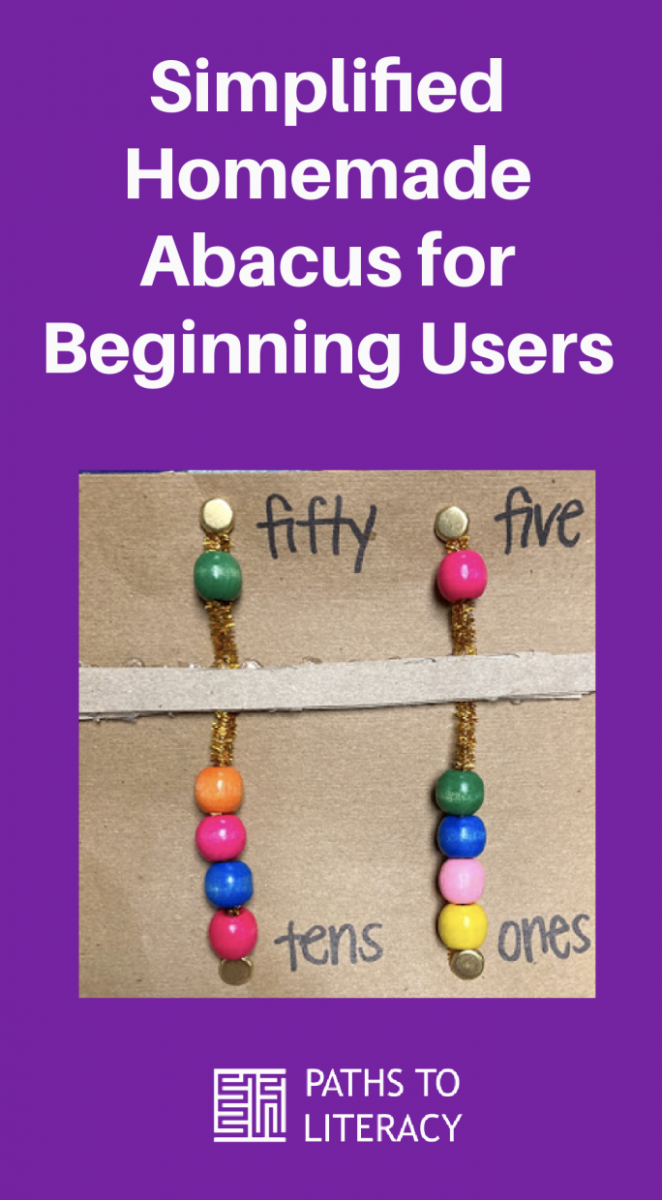Simplified Homemade Abacus for Beginning Users
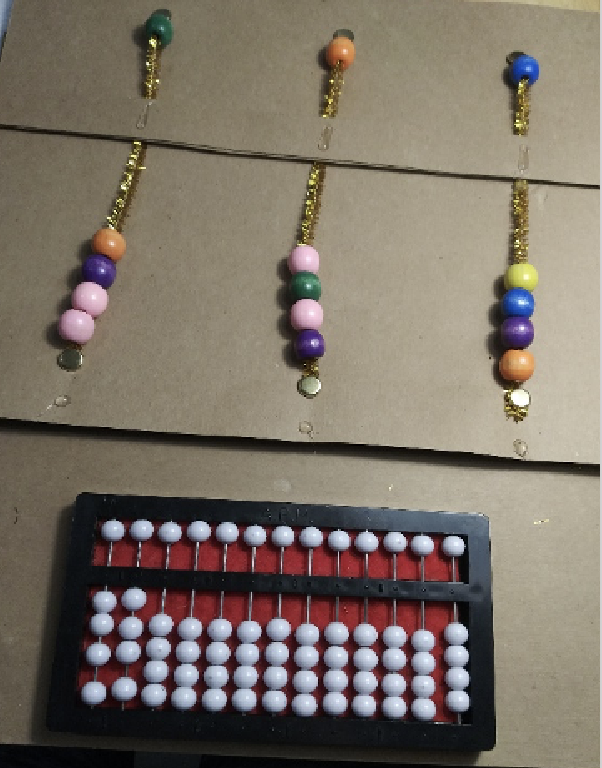
One of my students was struggling with the abacus in terms of her fine motor skills, and, no matter what we tried, it just wasn’t clicking! I decided to make my own simplified version of an abacus that only focused on two or three rods at a time. I added print and braille labels to the rods to help remind the student, as well as her paraprofessional and family. We call this the “Ackleycus”. I made a few different ones so we could each have our own, and I also made ones for the family to practice and use over Zoom!
- Cardboard (I used the cardboard squares that are on the bottom of the boxes of embosser paper!)
- Pipe cleaners (I used the tinsel/glitter pipe cleaners to provide more resistance.)
- Wooden beads
- Brass Plated Fasteners
- Hot Glue Gun
- Braille label/sticky paper
- First I cut the cardboard to the size I wanted. I aimed to keep it small and something easily held in my student’s hands.
- I placed the beads on the pipe cleaner to measure the sizes and where I needed to place the holes at the top and bottom. (I recommend using the brass fastener to create the hole, so it is enough to fit the pipe cleaner but not too large where it won’t stay nicely.)
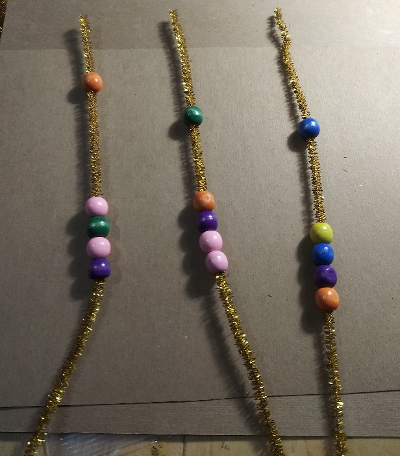
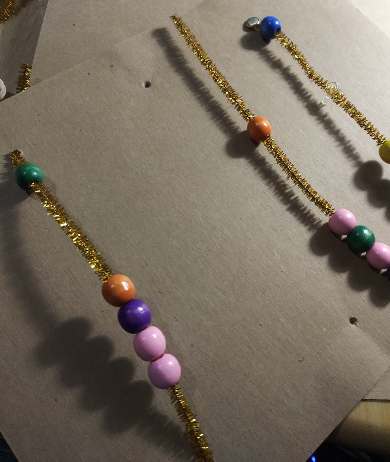
- I strung the pipe cleaner through both holes and secured it with a brass fastener.
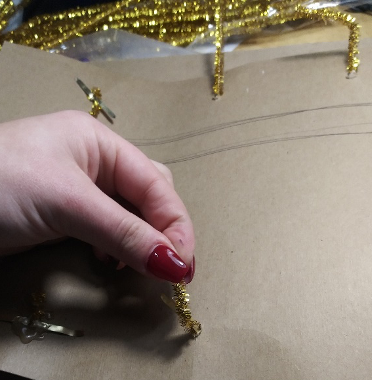
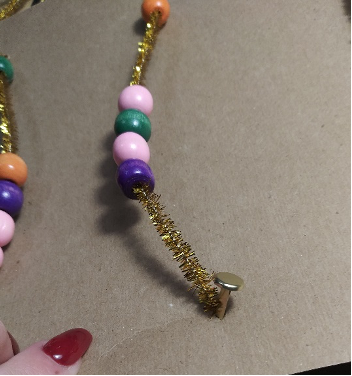
- Then I flipped it over and used a hot glue gun to secure the fastener and the extra pipe cleaner.
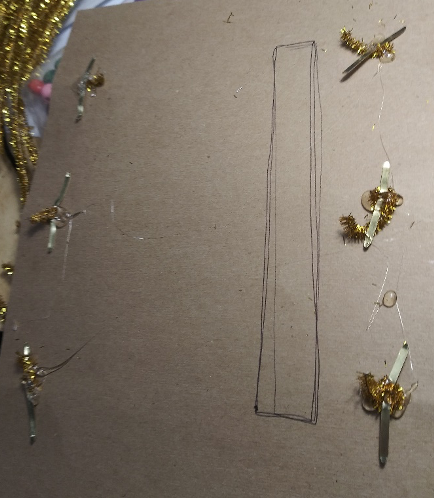
- Using the extra scraps from the cardboard, I measured and cut a thin piece to use as the “bar” and hot glued it down so that there was just enough room for the 5 beads to be “set” and “cleared” To make the bar thicker, I just cut more strips the same size and glued them on top of one another.
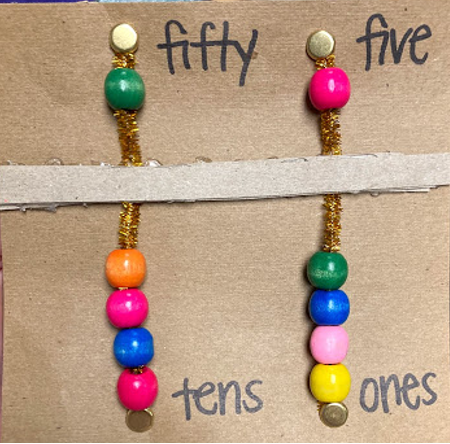
- Last, I added print and braille labels that indicated the rod, bar, ones, five, tens, fifty, hundreds, and five hundred. I made two different versions of it, one with just the ones and tens and one that went up to hundreds.
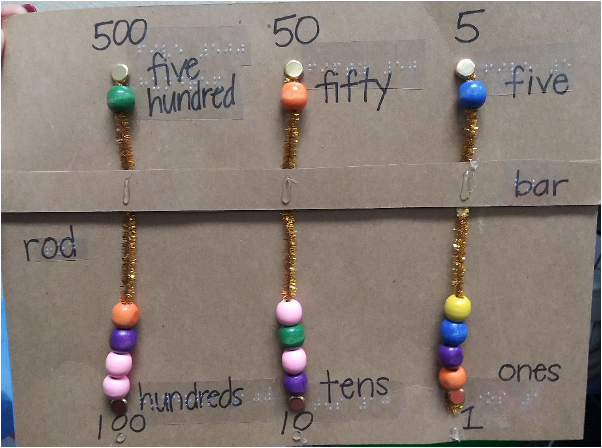
Once using this version of the abacus, my student was finally able to independently set numbers and read given numbers. Because of the resistance of the pipe cleaner and wooden bead, it is much easier to manipulate and move one bead at a time without multiple beads moving. This also helps a student when checking the number that they set because the beads won’t easily move up or down on their own.
With this adaptation, my student was able to set numbers up to 10 independently. This created an awesome teachable moment the next day when the class was doing calendar and the student questioned why the class needed to “bundle” the next group of tens. My student’s paraprofessional grabbed the abacus and reviewed how when you set a ten (bundle) you need to clear your ones. The 1st grade class sings a catchy song when doing this that goes, “Bundle, bundle, bundle!” we came up with our own version and now say “Set a 10 and clear clear!”
Video Demonstration of Student Using Homemade Abacus
